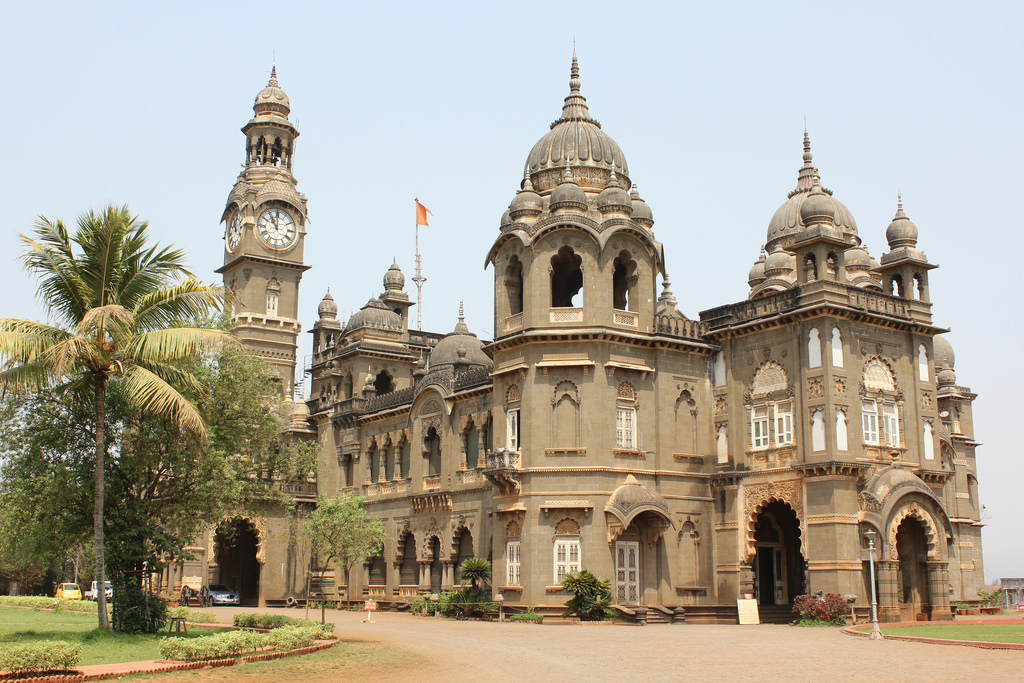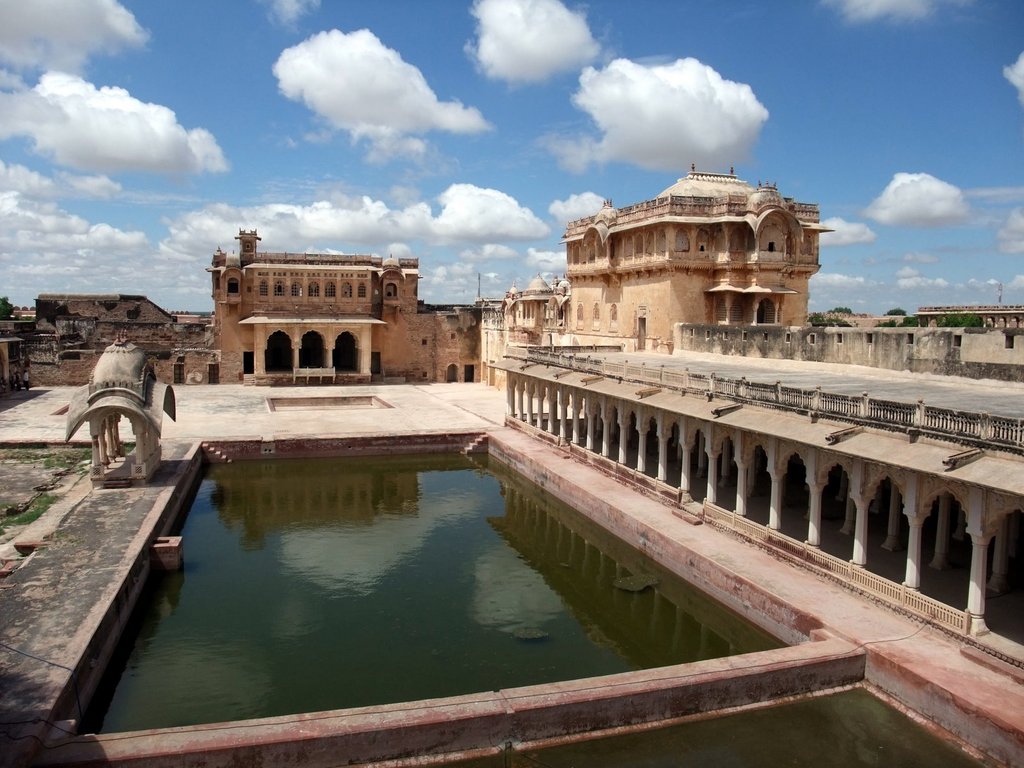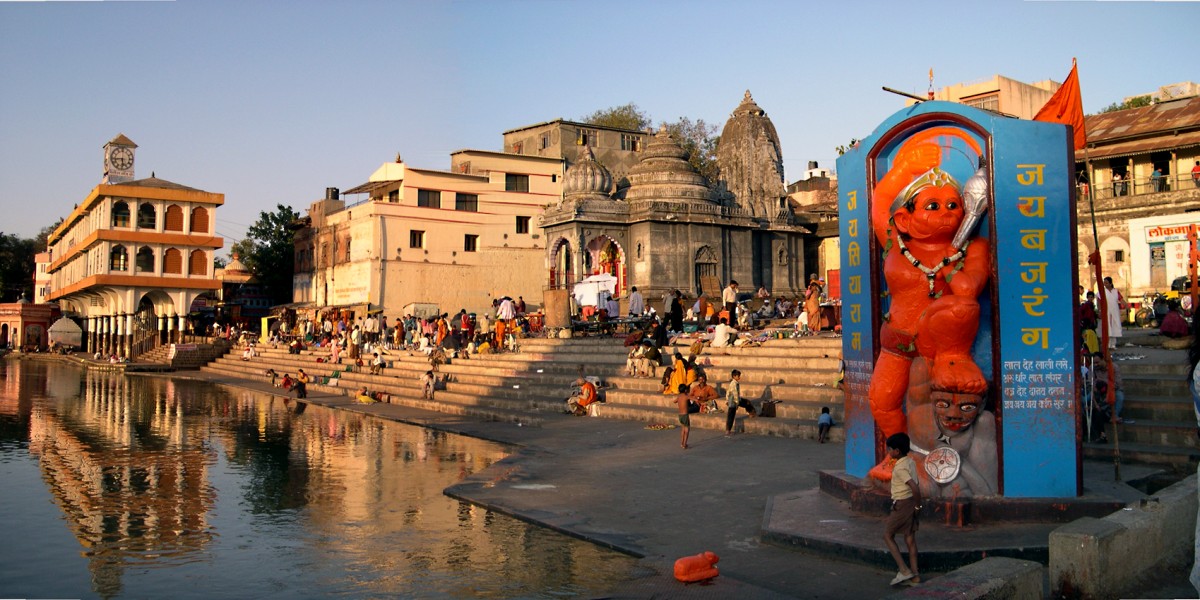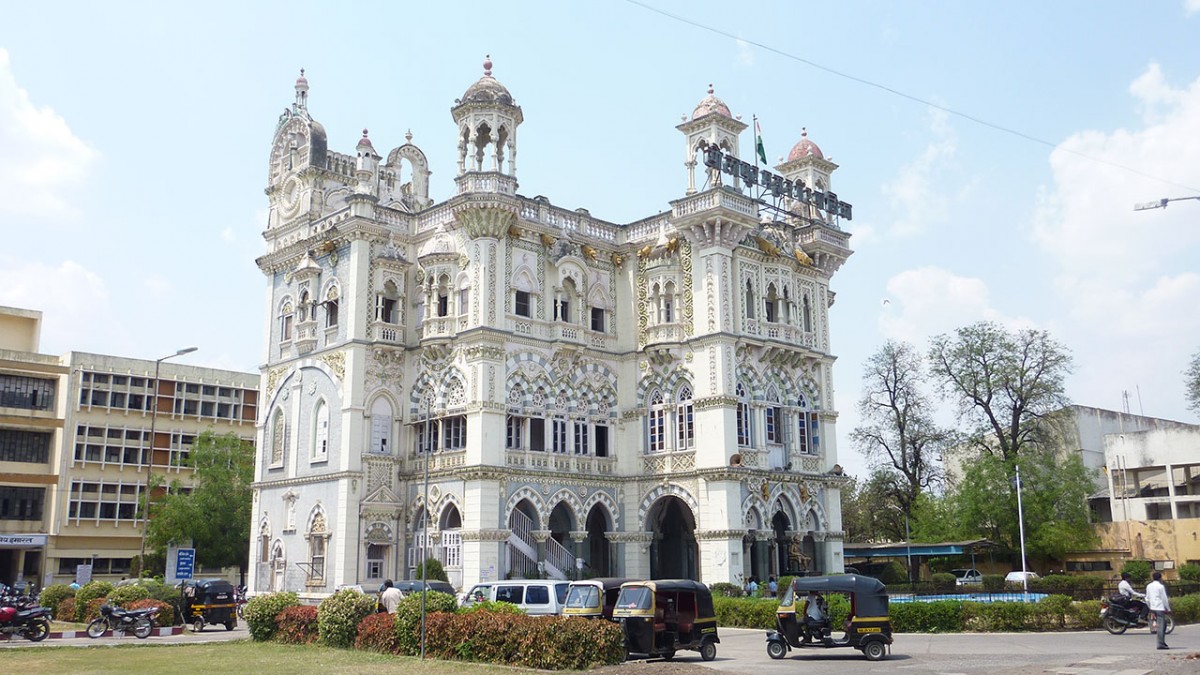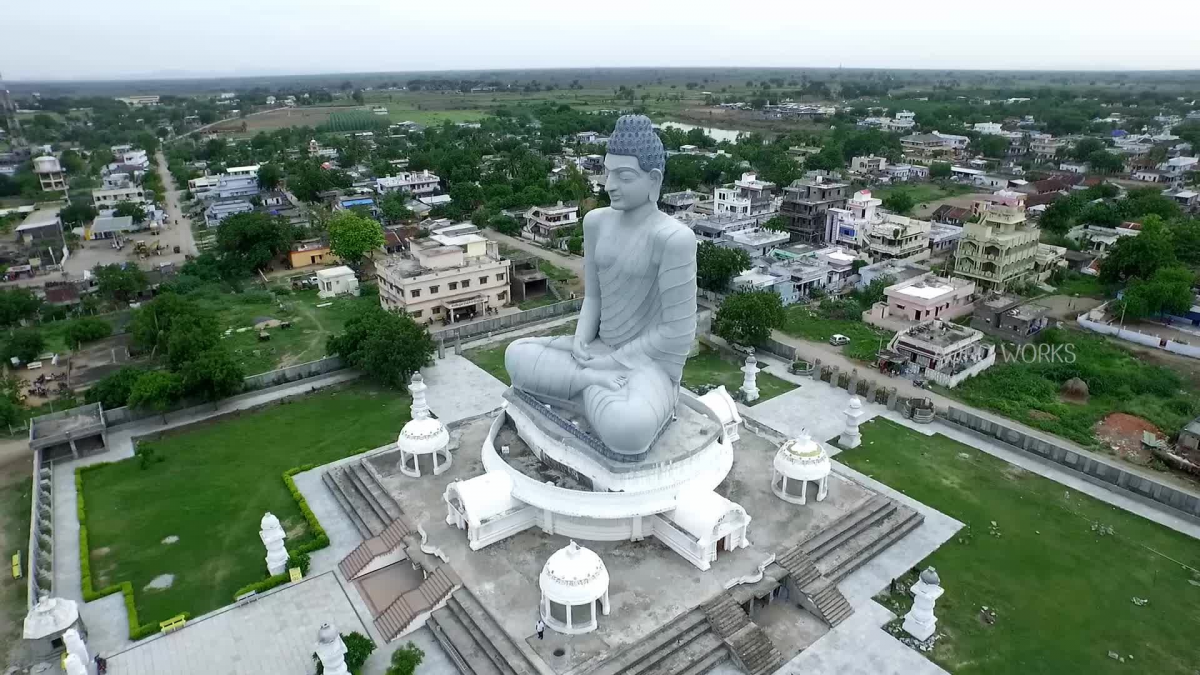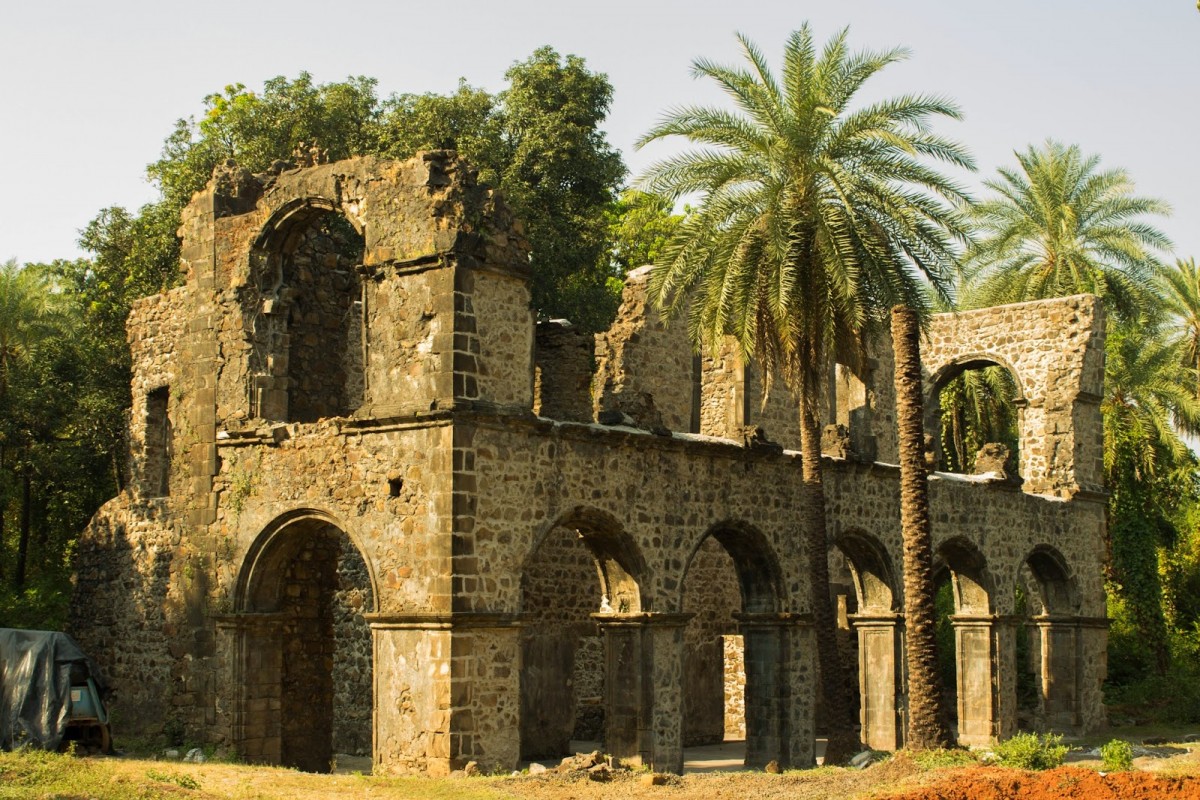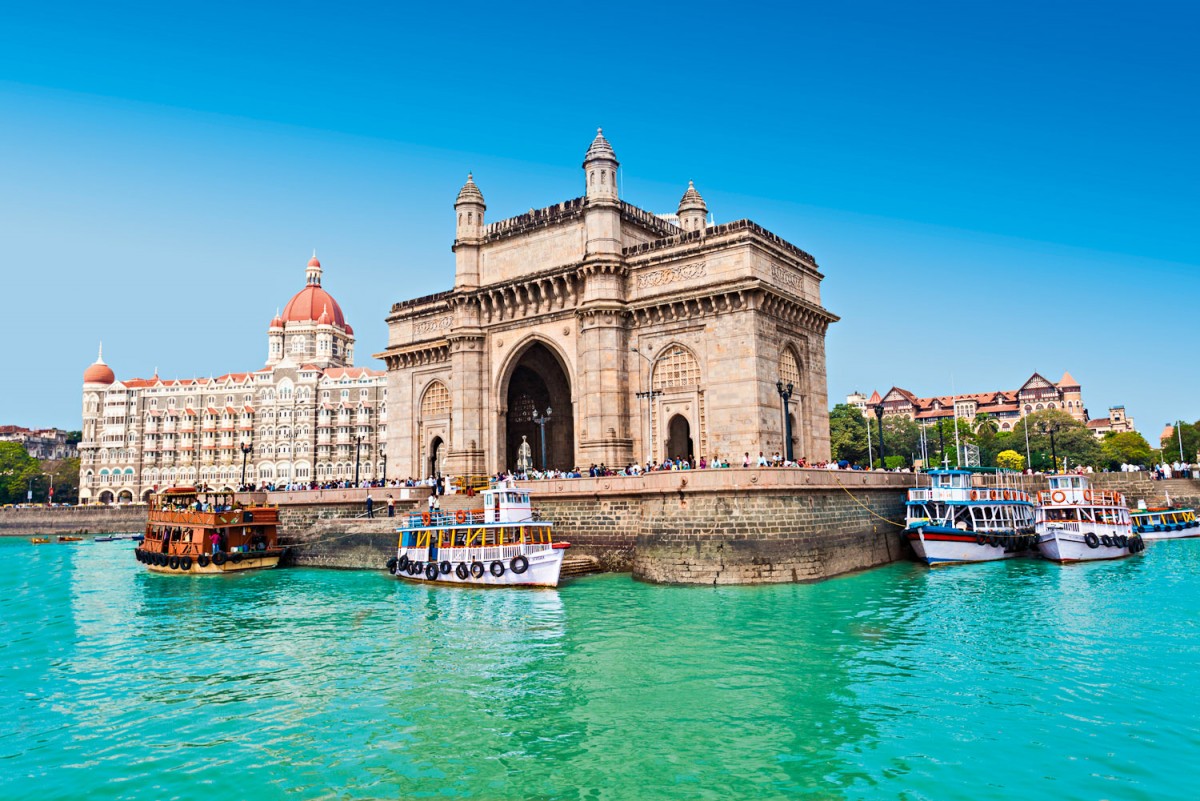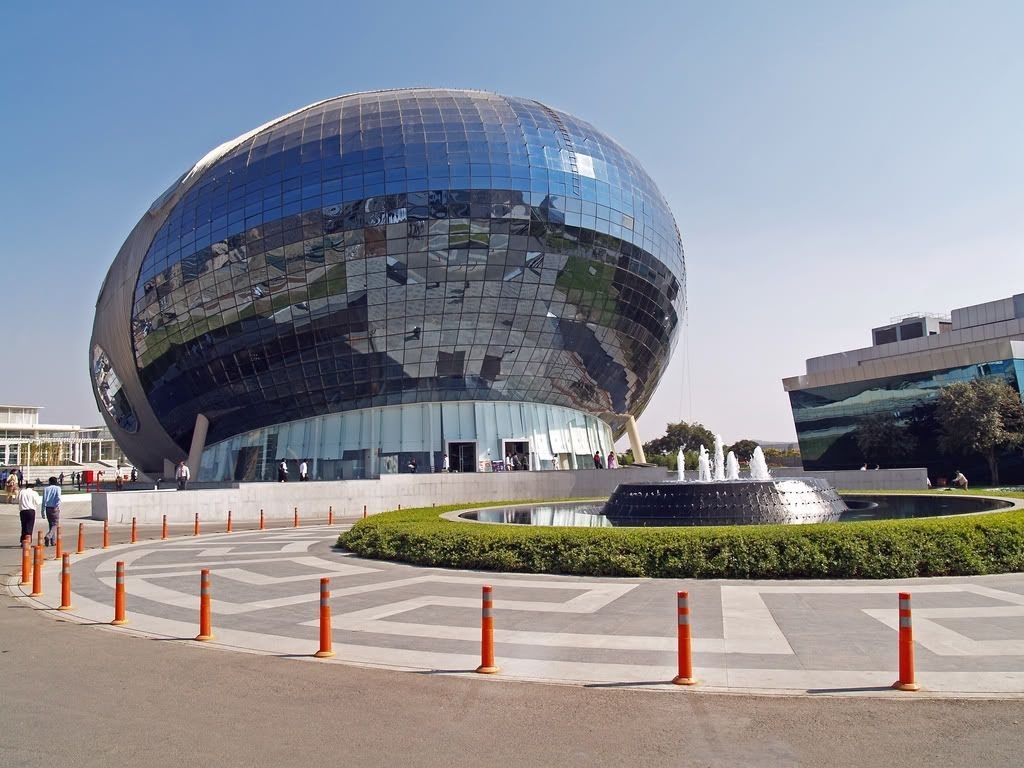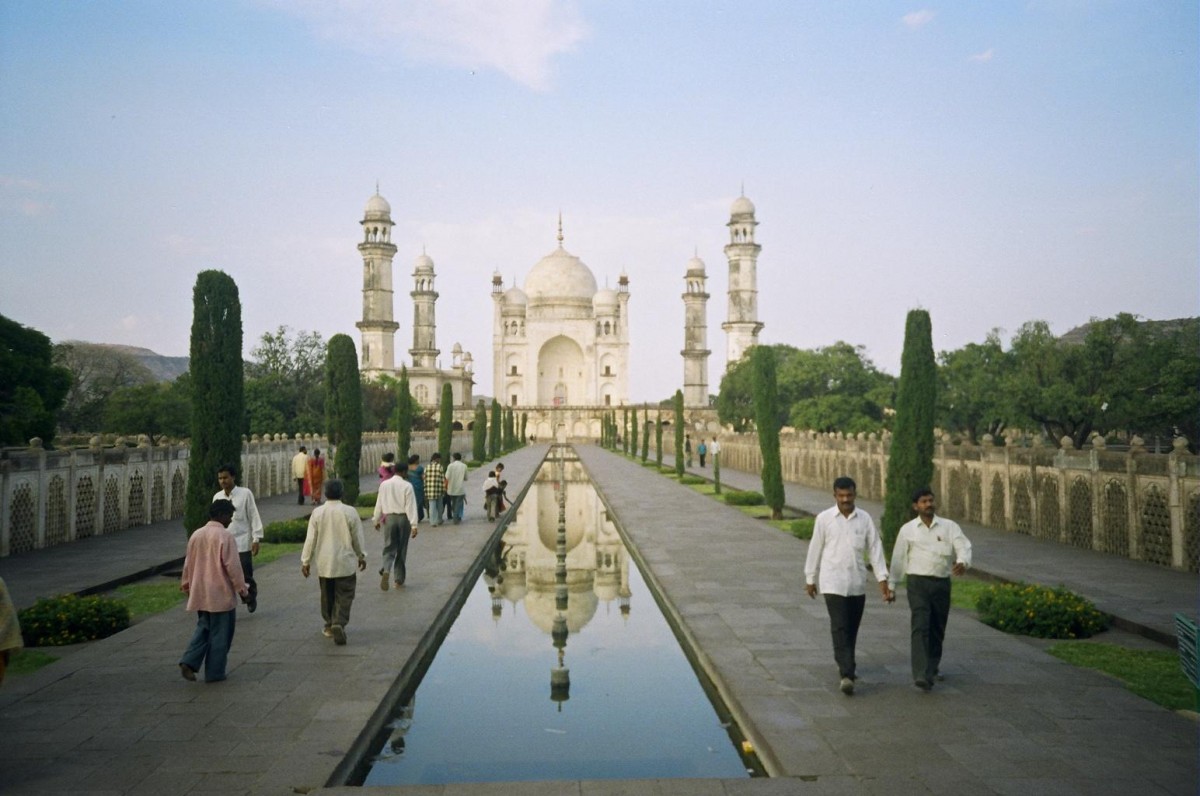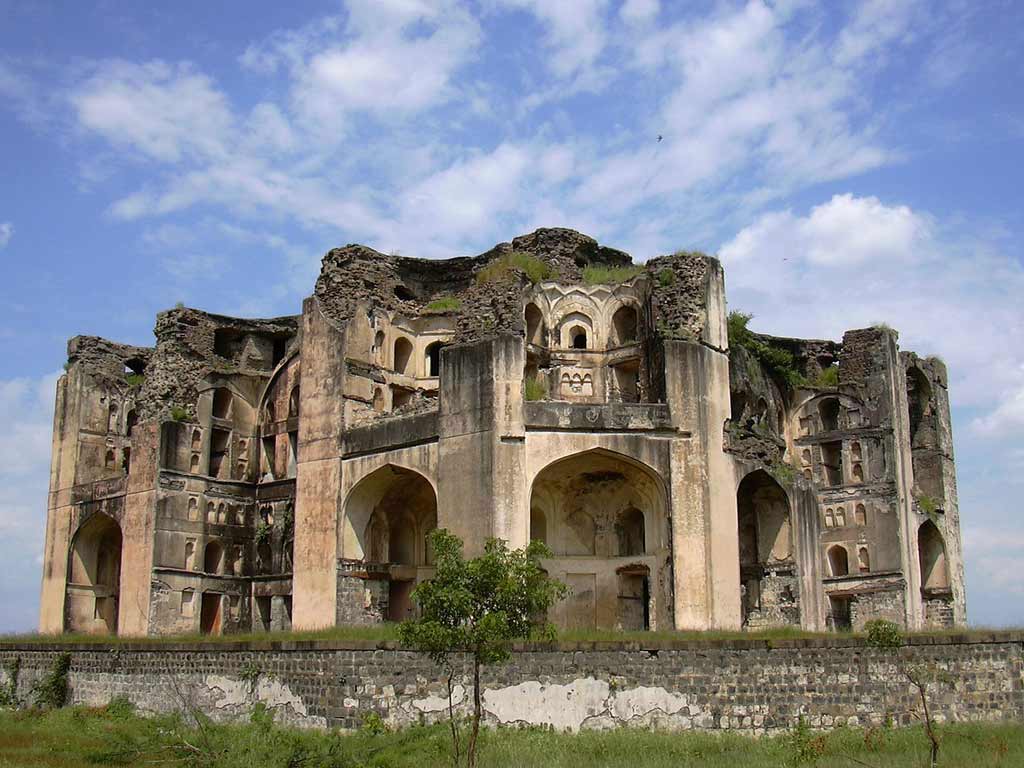
Ahmednagar Tourism
The early history of Ahmednagar starts from 240B.C. when the vicinity is mentioned in the reference to the Mauryan Emperor Ashok. It was not place of any district importance but small hamlets did lay in the neighbourhood of theAhmednagar present city and were regarded as important by-pass places in between Junner and Paithan.

The Andhrabrityas – the name of the dynasty of the ruling kings whose powers lasted from B.C. 90 to A.D. 300 and who at the time ruled the Deccan held Ahmednagar in their sway. After that The Rashtrakuta Dynasty ruled over Ahmednagar till about 400 A.D. and by the early Chalukya & Western Chalukya kings till 670 A.D. The Rashtrakuta kings then ruled Ahmednagar from 670 to 973 A.D. Govind III (785 to 810) was the mightiest of the Rashtrakutas whose kingdom stretched from Marwar and Rajputana in the north to Tungabhadra river in the south. Then followed the Western Chalukyas whose dynasty ruled from 973 to 1190 A.D. The caves and temple at Harishchandragad in Akola Tahsil were carved and built during this period.
After the Western Chalukyas, Ahmednagar passed on to the Deogiri Yadavs who ruled from 1170 to 1310. Deogiri (modern Daulatabad) sventy-four miles north east of Ahmednagar was the capital city of Yadavs. The most notable minister and statesman of this time was Hemadri who invented modi script (comparable to the running English script) and is still being studied by the intelligentsia. Hemadri was indeed a genius and is created with the idea of constructing buildings without the help of lime stone and mortar. His main idea in this is to place well cut stones of medium size across each other and filling upon each other in particular angles in such a manner that walls would be erected forming the shape of temple. Twenty six such temples scattered over the whole district bear a testimony to this. His engineering intelligence is still worth emulating by others.
The famous king of Yadav was Ramdeorao and his name is mentioned in the great literacy works of saint of Dnyandeo in this Dnyaneshwari, the contemporary of king. This Hemadri was the minister of this most reputed king. AhmednagarOtherwise strong & brave ; the military unpreparedness of king late to his defeat at the hands of Alladin Khilaji, the commander-in-chief of the Moghal king of Delhi, Jallalnddin Khilaji at Devgiri in 1294. This was the first
ever invasion of the Musalman kings in the South across the Vindsya mountains. This victory at the very invasion gave a fillip to the Muslim ambition of establishing Muslim stronghold in the Deccan. After repeated invasions the Adam domination came at end in 1318. Maharashtra the began to be ruled by governors appointed from Delhi and stationed at Deogiri. In 1338 Mohommed Tughlak, the emperor of Delhi made Deogiri his capital and changed its name to Daulatabad or the Abode of Wealth. Later on the Tughlak left Daulatabad and the disorderly noblemen of the Emperor harassed the people looting them and burning their houses and palatial buildings. These cruelties laid to a revolt among the Muslim nobleman & leader of one of factions, An Afgan soldier Alladin Hasan Gangu was successful in overthrowing the power of Delhi emperors and establishing an independent sovereign kingdom named after his Brahmin preceptor Gangu Brahmin at Gulbarga in 1347. The kingdom is known as Bahamani or Brahmin kingdom. This kingdom lasted for 150 years ruled by 13 kings after Hasan Gangu Bahamani. Administration was commendable & the frame setup by Hasan Gangu proved to be great strength. It was followed by the succeeding kings, when at last a great famine fell in 1460. It was repeated in 1472 & 1473. During this time the noble men became rather strong & disobedient. To face this administrative calamity, Mohamed Gawan who was prime minister contemplated to bring about a drastic change in the administration. The noble men were greatly disturbed and influenced king. They leveled various charges against Mohamed Gawan.
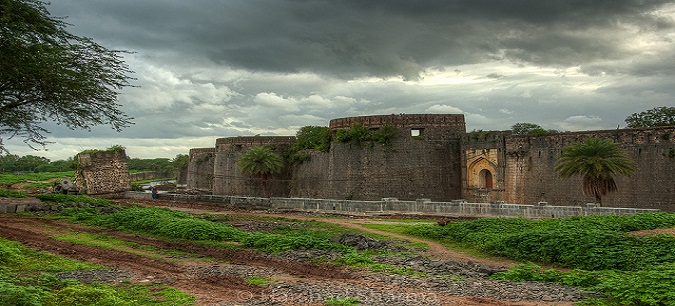
The king was weak enough to believe the charges and foolish enough to order the minister’s execution, a loss which Bahamani power never recovered. Thus poor Gawan put to death in 1487.
Thereafter the Bahamani kingdom was divided into five independent kingdoms. Ahmednagar was one of them, kownAhmednagar as Nizamshahi. Mohmad Gawan was succeeded in the office of Bahamani minister by Nizam-ul_mulk Bhairi and about the year 1485 Bhir and Ahmednagar were added to his estates. The management of this area was made over to the minister’s son Malik Ahmad, the founder of the Nizamshahi Dynasty of Ahmednagar. First of all Malik Ahmed made his headquarter at Junnar in Poona district.
In 1486 Nizam-ul-mulk was assassinated and Malik Ahmed became the Prime Minister of the Bahamani Kingdom. While Malik Ahmed was away from the king, the king ordered one of his generals Jahangir Khan to march against Malik Khan. While Jehangir Khan did take upon himself this task Malik Khan was almost unprepared and had a little army with him. But with great courage and unusual tactics, he defeated Jehangir Khan and army of Bahamani kingdom on the open grounds east of Ahmednagar on 28th of May 1490. This victory was called the victory of the garden because on that spot Ahmed Nizam built a palace and laid out a garden. From this time onward Ahmed Nizam continued to attack Daulatabad to lay the country waste. His headquarter, Junnar was far off from Daulatabad , so in 1494 he laid the foundation of a city close to the victory gardens (Bagh Nizam) upon the left bank of Sina river and called it after himself, Ahmednagar. In two years the city is said to have rivaled Bagdad & Cairo splendour.
Ahmed Nizam was still not at peace with him self and wanted to take revenge on the Bahamani forces. He was at last successful in 1499 when captured the fort of Daulatabad and stationed his army there. To commemorate this victory Ahmed Nizam raised a wall round the Bagh Nizam( this is the present fort of Ahmednagar) and in it built a palace of red stones. Ahmed Nizam dies in 1508 and was succeeded by his seven year old son Burhan. Ahmed Nizam was indeed a great man, that he could establish an independent kingdom clearly shows his qualities and statesmanship. By his kindness, peaceful demeanour & efficiency, he could win the loyalty of the local and foreign Muslims and also of the Maratha peasants and worriers. Since his origin was Hindu, he found no difficulty in wining over the confidence of Brahmins who were highly regarded by the Hindus. Ahmed Nizam was also a great swordsman, Administrator & general.
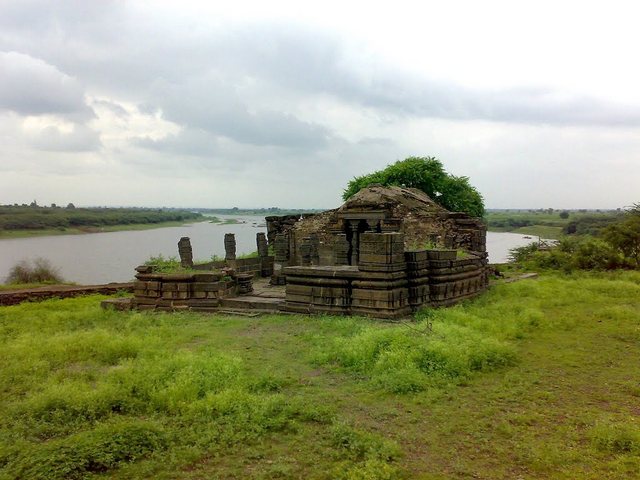
Burhan Nizam Shaha (1508 to 1553)
As Burhan Nizam Shaha was a child of seven years, Mukamil Khan Dakhani, an able statesman and general was appointed as Protector of king. When the king reached manhood he married a dancing girl, Amma and also used to drink wine. Mukamil khan did not like this and he retired from public life leaving everything to the young king’s care.
In 1523 Bibi Meriem, the sister of Ismail Adil Shah of Bijapur was given in marriage to Burhan and the nuptials were celebrated with great splendour. Asad Khan of Belgaum, the envoy of Adil shah had promised the town of Sholapur as dowry to Burhan Nizam, which he afterwards refused. This raised a quarrel amongst them and led to attacks and counter-attacks resulting in to a lasting ill feelings.
Burhan Nizam Shah was indeed a great warrior and fighting was his second nature. He spent most of his years in fighting with the Khandesh & Berar kings. He was never afraidof the mighty Bhahadur Shah, the king of Gujarat. One time the great Bahadur Shah marched against Burhan and stayed in the fort of Ahmednagar for a few months. Burhan Shah was never ruffled by the enemies’ might though he was in league with the kings of Berar and Khandesh. At last Bahadur Shah left Ahmednagar and Burhan Nizam Shah came to terms with the Bahadur Shah’s deputies. Burhan Nizam Shah was a man of great understanding knew the might, value and greatness of Bahadur Shah. He sent one of the saints of Ahmednagar, Shah Tahir to Gujrat and made friends with Bahadur, the Great. Burhan Nizam Shah was in constant alliance with the king of vijaynagar, Ramraja, Hindu king and often attacked Bijapur. At last Burhan Nizam Shah died in 1553 at the age of fifty four after a reign of forty seven years. His body was embalmed and entombed at Karbela in Persia, near the burial place of Hussan the son of Ali, the Prophet. He had two sons , Hussaian and Abdul Kadar by his favourite wife, Amina & two others Shah Ali and Miran Muhmmad Bukar by Bibi Marian , the daughter of Yusuf Adil Shah. He had also another son Shah Haidar married to the daughter of Khvaja Jahan Dakhani.
Husain Nizam Shah (1553-1565)
Hussain Nizam Shah succeeded his father in the thirteenth year of his age. There were two parties, the Abyssinians embracing Hussain Nizam Shah’s cause and the Dakhanis- both Muslmans and Hindus that of his brother Abdul Kadar, who at last was deserted by his party & left Ahmednagar & took refuge with the king of Bearar. The other brothers fled to their uncle at Bijapur.
Hussain Nizam Shah built Ahmednagar fort with stones. The fort was originally built of Mud. Now as new addition a ditch surrounding the fort was also built to keep the enemy at a safe distance from the stone wall. Ram Raja, the hindu king of Vijaynagar often attacked the Ahmednagar fort and persued Hussain right upto Junnar.
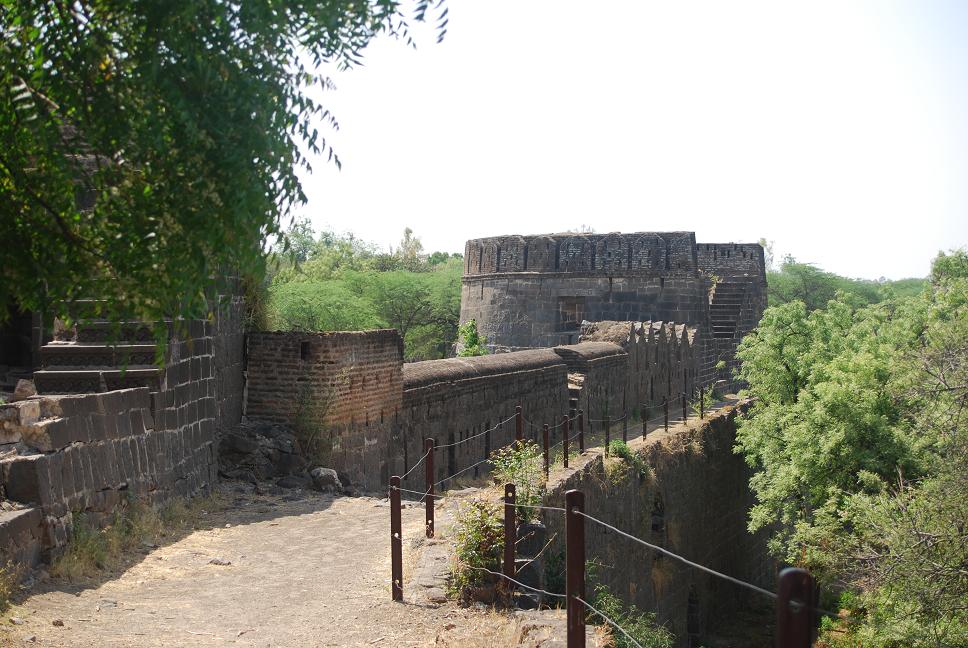
The Adil Shah of Bijapur often helped Ram Raja against Hussain Nizam shah. The Adil Shah and Hussain Nizam shah often marched against each other and tried to take revenge. Ram raja played the role of making these Muslim kings fight against one another.
Hussain Nizam shah could see the futility of nursing ill feelings against one another amongst the Muslim kings. He therefore entered into league with the kings of Bijapur, Bedar and Golkouda against Ram raja in 1564.
The united army of 4 kings defeated Ram raja in 1565 at Rakshastagadi. Hussain Nizam Shah’s elephant Gulam Ali caught Ram Raja,in his trunk and brought him to Hussain Nizam Shah, who beheaded him. Seeing the head of their king, Ram raja, which was struck on the point of a Lance. Ram raja’s army fled to Vijaynagar. The allies attack Vijaynagar and looted it and sacked and plundered the city. After this Hussain Nizam shah died at Ahmednagar, he left four sons & four daughters.
Murtaza Nizam Shah (1565-1588)
Murtaza Nizam Shah, Hussain’s son came to the throne when he was a minor. He was commonly known as Divana and madman. His mother Kurja Sultana acted as regent for six years. The alliance between Nizam Shah & Adil Shah was a little disturbed on account of Vijaynagar king. The Nizam Shah & Adil Shah in March league against Tufalkhan , who as prime minister of Berar had usurped a great deal of power. On their return from this invasion, Adil Shah tried to capture Murtaza Nizam Shah, but the latter , knowing this in advance fled back with his mother night. Thus the old rivalry started with the incident. The king overthrew the powers of his mother and later on appointed Changiz Khan his agent. King Murtaza and Changiz Khan then marched to Berar drove Tufal Khan & his son from Elichpur to the hills.
Tufal Khan felt insulted & applied for help to Emperor Akbar of Delhi. This because of Tufal Khan, the Delhi Emperor got opportunity of mixing in the affairs of the Deccan Murtaza received warning from the Emperor to quit Berar. But he did not take any notice of this. On contrary he continued his victorious campaign, seizing and placing in confinement, Tufal Khan, his master Burhan. Imad-ul-Mulk and his family. Unfortunately., however king Murtaza was displeased with Changiz Khan on account some political reason, with the result that Changiz Khan was compelled to take a glass of poison. Salabat Khan one of the great statesman was then appointed as minister of the Nizam Shahi (by about 1579). In 1584, the sister of Bijapur king was brought over to Ahmednagar with great pomp and dignity with the intention of getting her married Miran Hussain, the Prince of Ahmednagar.
Murtaza was called a madman because his behavior was at times strange. Once he wanted to give two beautiful necklaces as a present to one of his favourites. Salabat Khan did not like this, so he substituted these two most beautiful necklaces. The king was enraged and ordered Salabat Khan to place all the ornaments plundered in the war against Ramraja, the Hindu of Vijaynagar. The minister did so and when the king knew those two necklaces are missing, he ordered the ornaments to be thrown into fire. Thus these ornaments were put into fire. Salabat Khan lost king’s favour and was confined to jail at Danda rajapur. Murtaza always suspected that his son was after displacing him, so once while the youth was sleeping in his chamber, Murtaza set fire to his bed clothes and fastened door upon him. Thus Murtaza tried to destroy his son.
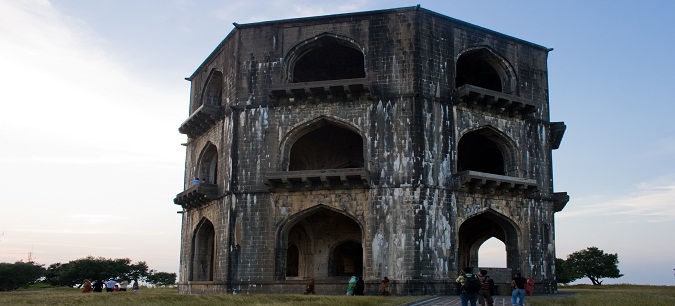
The prince’s cries for help brought his father’s friend Fatteh Shah to save him. He carried off the prince secretly to Daulatabad. When king heard of this, he dismissed all his ministers and appointed Mirza Khan as regent. Mirza Khan knew about the imbecility of the king. The king at such critical times released Salabat Khan. Mirza Khan managed to release the prince Miran Hussain from Daulatabad and tried to reach Ahmednagar, before Salabat Khan. The prince and Mirza Khan rushed into the fort with 40000 armed men. The prince treated his father with greatest contempt and put him into a warm bathing room, close the doors and windows lighted a great fire underneath. Thus the king was speedily suffocated to death in 1588.
Miran Hussain Nizam Shah (1588)
Miran hussain appointed Mirza Khan prime minister but never cared for anything except pleasures and excesses. Mirza Khan advised Miran Hussain to put to death the male members of the royal family. Lest they would either go against the king of create suspicion about the royal officers. Accordingly Miran Hussain put to death fifteen princes. After some days Miran Hussain decided to put Mirza Hussain to death. When Mirza Hussain learn this plot he captured the king and sent for cousins Ibrahim and Ismael from Poona. When they arrived in Ahmednagar, Mirza Khan called a meeting of the leading noblemen from Ahmednagar and announced in the meeting that the king was deposed and Ismael Shah, a twelve year old boy was made Nizam Shah.
While the salutations to the new king were going on inside the fort, Jamal khan, a military leader with several officers and soldiers mainly Abyssians and Dakhanis assembled at the gate of the fort demanding to see Miran Hussain, their rightful king Jamal khan told the nobels and people of Ahmednagar that if Mirza Khan were allowed to act uncontrolled, they would be soon slaves in their own land. Thousands of men gathered at the gate. When Mirza Khan saw this , he ordered Miran Hussain’s head to be cut off. The king’s head was placed on pole and planted on one of the bastions.
Jamal khan ordered the gate of the fort to be burnt. The mob then rushed into the fort, but Miraz Khan made good his escape, but later on he was seized at Junnar and brought back to Ahmednagar. He was first carried through the city on an ass and his body mangled. The massacre continued for seven days and nearly thousands foreigners were murdered.
Ismael Nizam Shah (1588 to 1590)
Jamal Khan acknowledged Ismael as Nizam shah. Jamal Khan put to death all foreign Musalmans, but had to spent most of his time career in fighting. When Emeror Akbar Knew about the restlessness in the Deccan, he recalled Burhan Nizam (father of Ismael Shah) and allowed him to start for the Deccan. Soon after this Jamal Khan was killed in one of the battles. Burhan Nizam captured his son and confined him to prison.
Burhan Nizam Shah (II) 1590 to 1594
Burhan Nizam Shah was advanced in age and gave himself to pleasures and excesses. Nothing important happened during his reign except a few skirmishes here and there. Before his death on March 15, 1594 he appointed Ibrahim his successor.
Ibrahim Nizam Shah 1594
By his father’s advice Ismael Nizam appointed Mian Manju Dakhani his tutor to be his Prime Minister Two parties one led by Mian Manju and the other led by Yekhlas Khan, a partisan of Ismael arose in Ahmednagar and a sort of civil war loomed large on the horizon, The Adil Shah always wanted to conquer Ahmednagar, so knowing this he marched to Ahmednagar borders. Yekhlas Khan wanted to fight but Mian Manju proposed to conclude peace so that the whole forces of the Deccun might joint to meet Emperor Akbar’s intended invasion. The king who was given to drinking persisted in an attack on the Bijapur Army and was shot in the head in the action which followed. Thus ended his rule of four months.
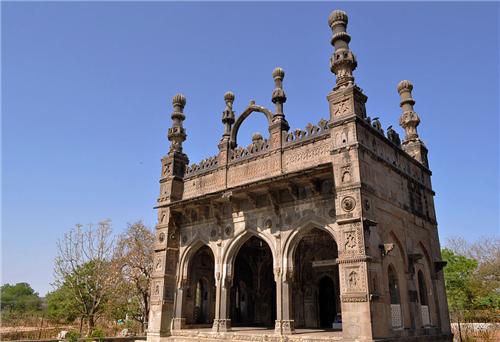
Ahmed (II) 1594-95
After Ibrahim Nizam Shah’s death most of the Abyssinians felt that the king’s only son Bahadur, an infant in arms should be proclaimed under the regency of Chand Bibi, his father’s aunt, Mian Manju was opposed to this Instead it was agreed to bring Ahmed, the son of Shah Tahir (who clamied tobe the son of Muhammed Khudabanda brother of Husain Nizam Shaha,) a boy of twelve years who was imprisoned at Daulatabad. This Ahmed was crowned as Nizam Shah on 6th of August 1594. The Chiefs divided the kingdom among themselves and removing Bahadur, the late king Ibrahim’s son from the charge of his aunt sent him by force to the fortress of Chavand.
Soon a quarrel arose among the chiefs and bloodshed became the rule of the day Mian Manju wanted to overcome all the disorder and so he wrote a letter to Prince Murad, Emperor Akbar’s son who was then in Gujrat to march his army to Ahmednagar, Murad who was waiting for an opportunity to invade Deccan promptly accepted this invitation.
While Murad was on march to Ahmednagar many noblemen left Yekhlas Khan and joined Mian Manju . Mian Manju now repented of his earlier mistake of sending an invitation ot Prince Murad and decided to resist Prince Murad in the interest of Nizam Shahi So he marched out of Ahmednagar with Ahmed in his possession and requested Chand bibi to accept regency and protect the fort and repulse the attack of Prince Murad. Yekhalas Khan also escaped.
Chand Bibi accpeted this regency and proclaimed Bahadur Shah king of Ahmednagar, Prionce Murad attacked the fort of Ahmednagar but his attack was bravely repulsed by Queen Chand Bibi. At last she gave Prince Murad and he withdrew.
In 1599 Akbar dispatched Prince Danyal Mirza and Khan Khanan to ahmednagar Prince Danyal laid siege to the fort Sultana Chand Bibi could not bring about an effective resistance. So she decided to negotiate terms with Prince Danyal. But Hamid Khan, one of the noblemen in the fort ran cut in the streets saying that Chand Bibi was in treaty with the Moguls for the delivery of the apartment and put her to death. Thereupon the Moguls entered the fort and conquered it Bahadur was arrested and sent to Delhi and afterwards confined in the fort of Gwalior. Then Emperor Akbar made over Khandesh Ahmednagar to Prince Danyal.
Murtaza Nizam Shah (1600-1613)
Though Emperor Akbar appointed his officers to look after the kingdom of the Deccan, the Nizam Shah’s officers refused to believe them. They had lost their independence. They declared Murtaza, the son of Shah Ali king and made Paranda, about 75 miles south east of Ahmednagar capital.
The two famous officers Malik Ambar an Abyssinian and Mian Raju Dakhani, in spite of the presence of the Moghul forces, held the territory for about twenty years. Malik Ambar was a genius and laid out a system of marking land and counting land revenue.

Malik Ambar was the regent of the Nizam Shah from 1607 to 1626. During this period he increased the strength and power of Murtaza Mizam Shah and raised a large army. He changed the capital from Paranda to Junar and founded a new city, Khadki which was later on changed to Aurangabad by the Emperor Aurangzeb when he invaded the Deccan (1658 to 1707) , Malik Amber thrust defeats on the Moghul General Khan Khanan many times and attacked Ahmednagar often.
Lakhuji Jdhavrao, Maloji Bhosale, Shahaji Bhosale and other Maratha chiefs had gained great prominence during this period and with the help of these Maratha Chiefs. Malik Ambar had captured Ahmednagar fort and town from the Moghals . But in one of the battles Malik Ambar was defeated by the Moghals and had to lose the fort of Ahmednagar, Many Maratha Chiefs and especially Lakhuji Jadhavrao joined the Moghals. Shah Jahan-Prince of Delhi once again laid a crushing blow to Malik Ambar in one of the battles and further decreased his power.
Malik Ambar was a great statesman and soldier. He humbled the might of the Moghal and Adil Shah of Bihjapur and raised the falling status of the Nizam Shah. Though defeated by the Moghals he was never cowed down by their might He died in 1626 at the age of 80 (eighty)
Malik Ambar two sons, Fatteh Khan and Changiz Khan of whom. Fatteh Khan succeeded his father

